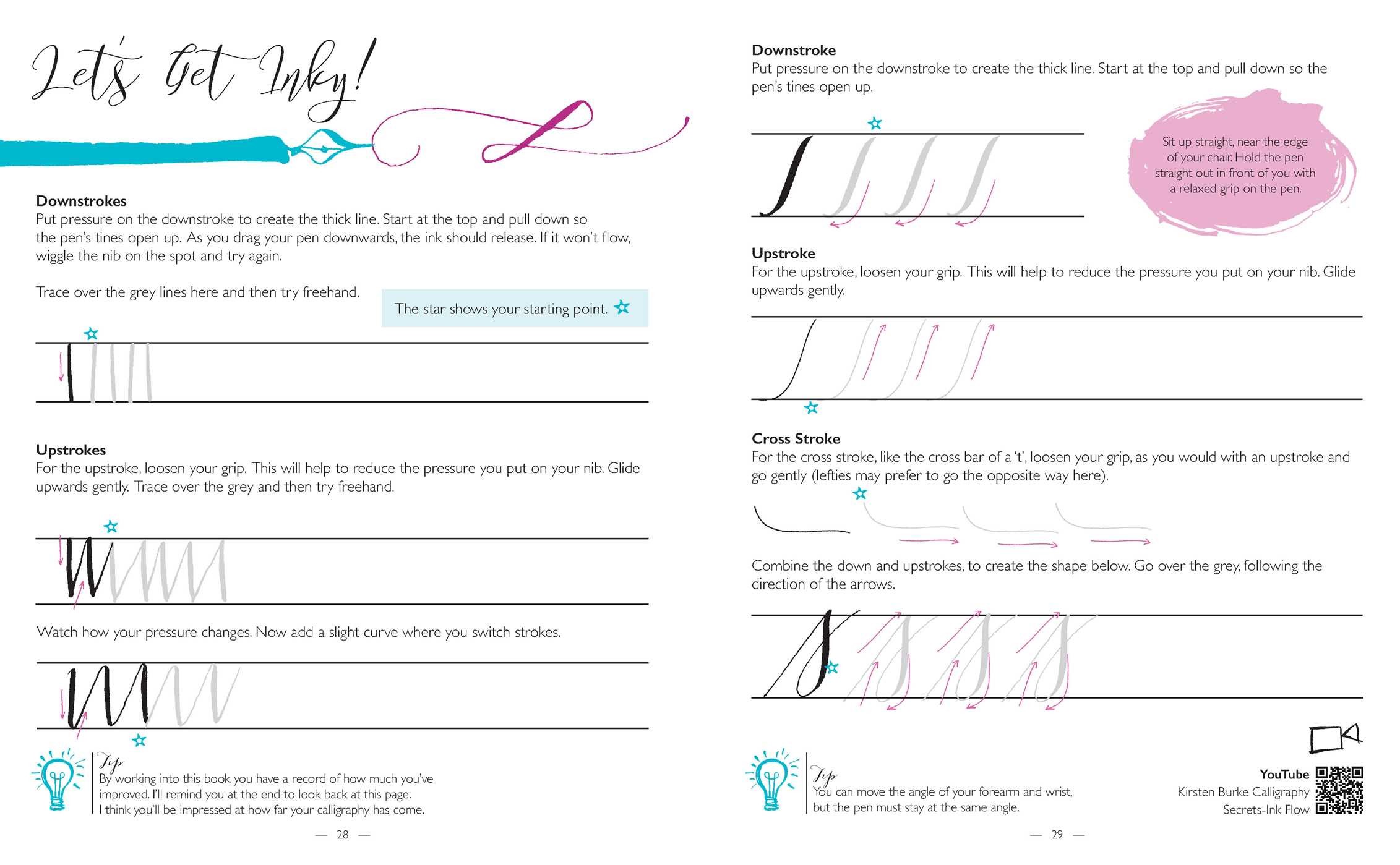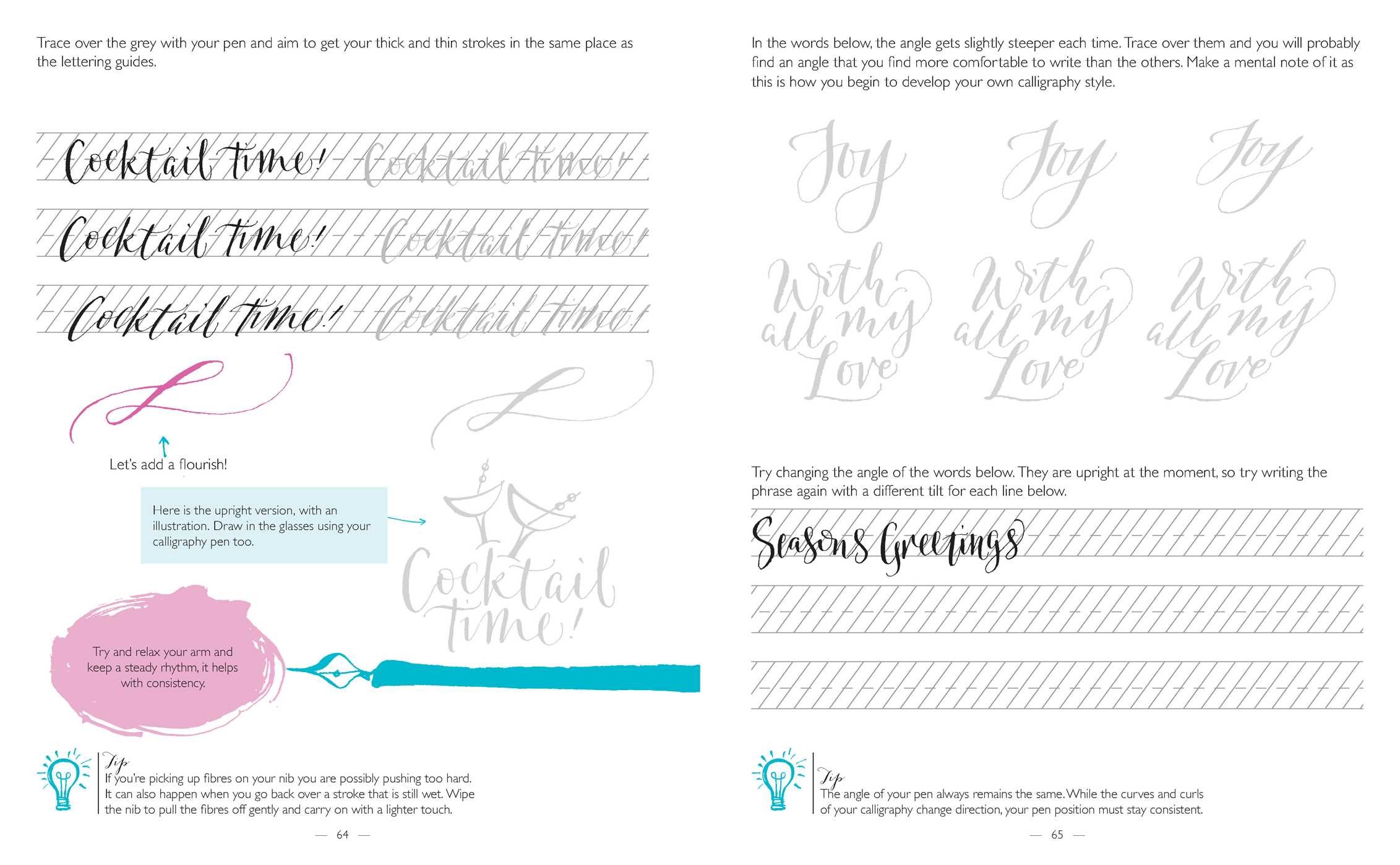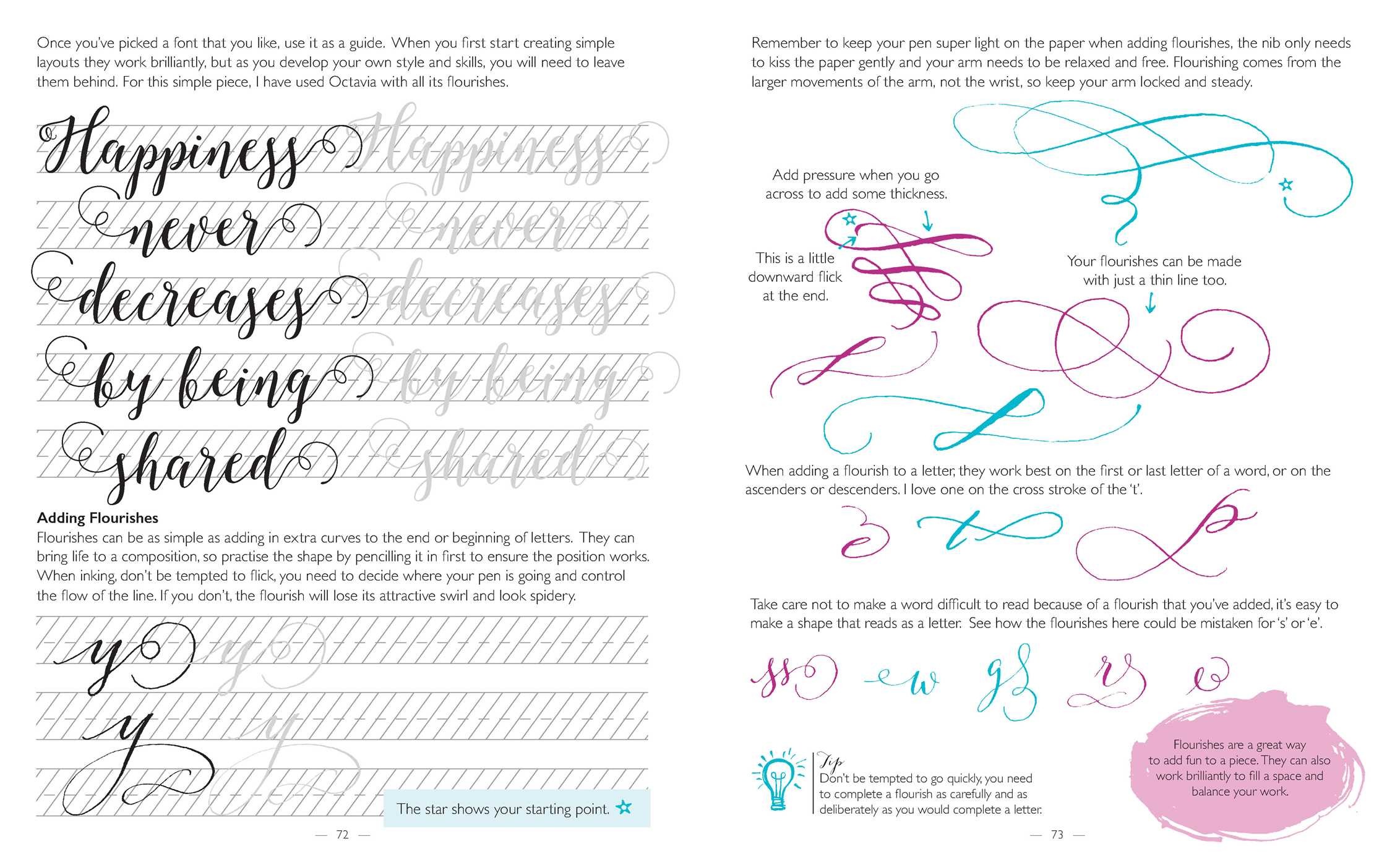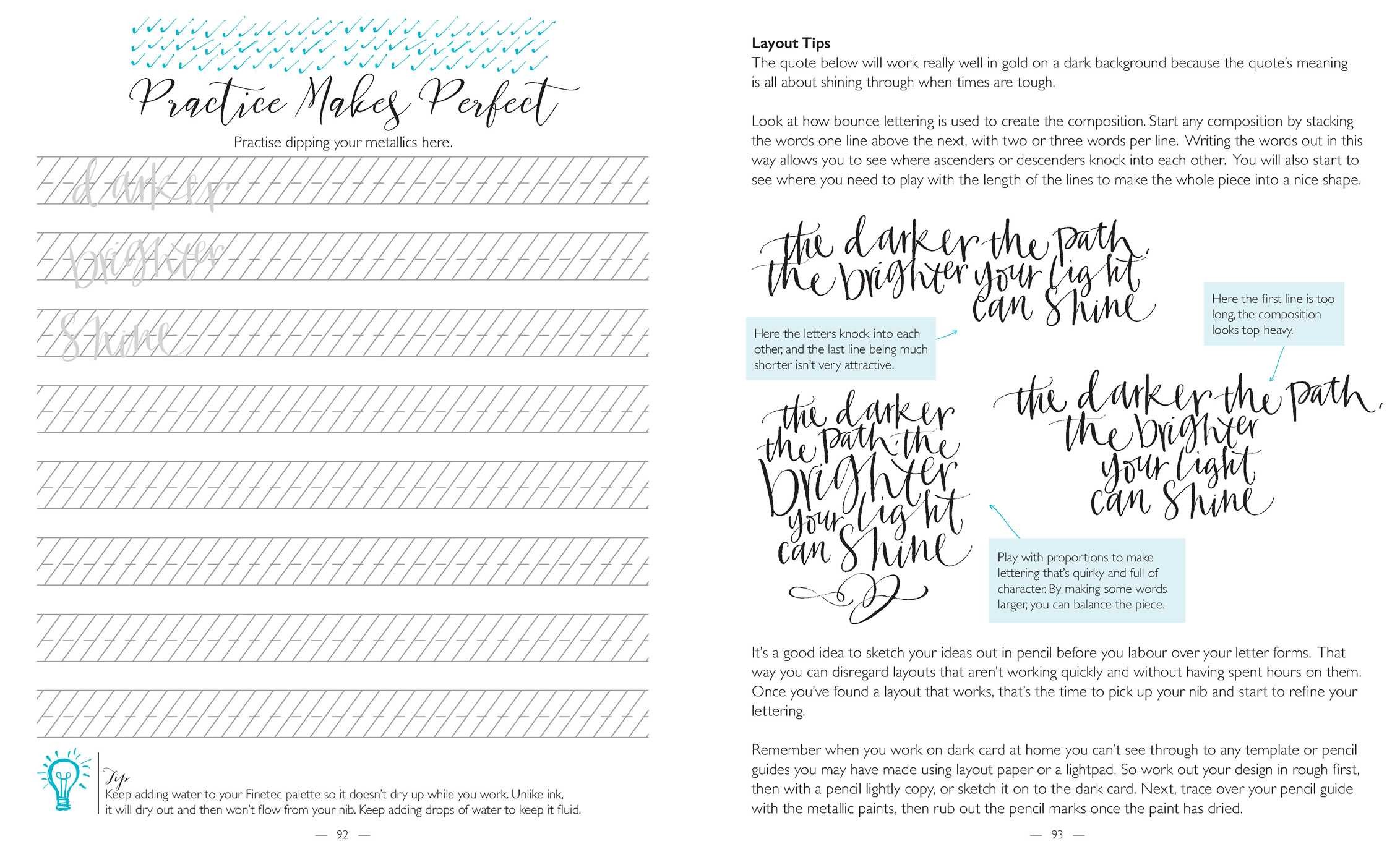Plus, receive recommendations and exclusive offers on all of your favorite books and authors from Simon & Schuster.
Secrets of Modern Calligraphy
Published by Weldon Owen
Distributed by Simon & Schuster
Table of Contents
About The Book
Every project reveals more of the secrets of modern calligraphy, so that by the end of the book you will be armed with everything you need to head off on your own lettering adventure.
The book is a combination of instruction and inspiration for modern calligraphy, teaching basic letters as well as introducing projects of different skill levels. Full of tips, tricks and techniques you will learn how to create your own calligraphy through typefaces to trace and copy, handwriting styles to explore, advice on penmanship, brush strokes and lettering styles. Also includes 7 perforated postcards and 16 template pages.
The book is a combination of instruction and inspiration for modern calligraphy, teaching basic letters as well as introducing projects of different skill levels. Full of tips, tricks and techniques you will learn how to create your own calligraphy through typefaces to trace and copy, handwriting styles to explore, advice on penmanship, brush strokes and lettering styles. Also includes 7 perforated postcards and 16 template pages.
Excerpt
Downstrokes
Put pressure on the downstroke to create the thick line. Start at the top and pull down so the
pen’s tines open up.
Upstroke
For the upstroke, loosen your grip. This will help to reduce the pressure you put on your nib. Glide upwards gently.
Cross Stroke
For the cross stroke, like the cross bar of a ‘t’, loosen your grip, as you would with an upstroke and go gently (lefties may prefer to go the opposite way here).
Exercise: Combine the down and upstrokes, to create the shape below. Go over the gray, following the direction of the arrows
Left Handers
Pointed nibs are symmetrical, so it doesn’t matter at all if you are left-handed. What does matter is whether you are an ‘overwriter’ or an ‘underwriter’. If you’re a leftie, you’ll know what this means!
If you are an underwriter, as shown in the first picture, and keep your wrist straight when you
write you will be able to work in the same way as a right-hander. The only difference is that you
will need to turn the page clockwise, so that the pen will be in the correct position, as shown in
the picture below.
If you are an overwriter and bend your wrist over the paper, as shown in the second picture, you will have to reverse everything, so wherever I talk about thick downstrokes, you will be doing thick upstrokes.
Start at the bottom of the letter and push the pen up, applying pressure on the nib to create
a thick stroke. Go lightly on your downward strokes for the ‘thins’. You will have to experiment moving your paper around, trying different nibs and finding a comfortable position so that the tines can open and the pen will work well for you. If your grip allows you to exert even pressure on both tines of your nib, then you are holding the pen correctly.
Put pressure on the downstroke to create the thick line. Start at the top and pull down so the
pen’s tines open up.
Upstroke
For the upstroke, loosen your grip. This will help to reduce the pressure you put on your nib. Glide upwards gently.
Cross Stroke
For the cross stroke, like the cross bar of a ‘t’, loosen your grip, as you would with an upstroke and go gently (lefties may prefer to go the opposite way here).
Exercise: Combine the down and upstrokes, to create the shape below. Go over the gray, following the direction of the arrows
Left Handers
Pointed nibs are symmetrical, so it doesn’t matter at all if you are left-handed. What does matter is whether you are an ‘overwriter’ or an ‘underwriter’. If you’re a leftie, you’ll know what this means!
If you are an underwriter, as shown in the first picture, and keep your wrist straight when you
write you will be able to work in the same way as a right-hander. The only difference is that you
will need to turn the page clockwise, so that the pen will be in the correct position, as shown in
the picture below.
If you are an overwriter and bend your wrist over the paper, as shown in the second picture, you will have to reverse everything, so wherever I talk about thick downstrokes, you will be doing thick upstrokes.
Start at the bottom of the letter and push the pen up, applying pressure on the nib to create
a thick stroke. Go lightly on your downward strokes for the ‘thins’. You will have to experiment moving your paper around, trying different nibs and finding a comfortable position so that the tines can open and the pen will work well for you. If your grip allows you to exert even pressure on both tines of your nib, then you are holding the pen correctly.
Product Details
- Publisher: Weldon Owen (June 5, 2018)
- Length: 112 pages
- ISBN13: 9781681883823
Browse Related Books
Resources and Downloads
High Resolution Images
- Book Cover Image (jpg): Secrets of Modern Calligraphy Trade Paperback 9781681883823













